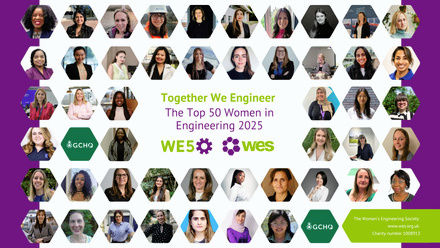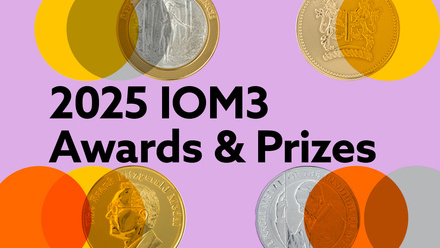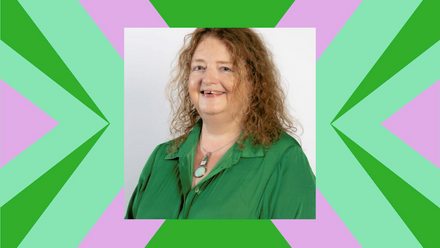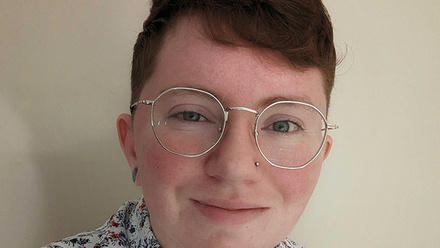Extraordinary women in materials, minerals and mining
In celebration of 150 years of the Institute, we focus on seven extraordinary women who were members of our predecessor bodies and pioneers in their time
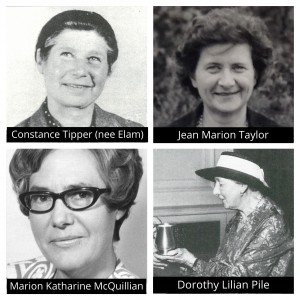
In the early years of the last century, women began to be employed in research organisations and the research labs of commercial companies, and as they progressed in their profession, became members of professional institutions. The Iron and Steel Institute (ISI) had four women members in 1918, and the first female member of the Institute of Metals - the non-ferrous equivalent of ISI - was elected in 1916. These women were pioneers in their time, entering what was very much a man’s world, and many of them made significant contributions and became prominent in their field. Here we focus on seven extraordinary women who made their mark in materials and minerals.
Marie Laura Violet Gayler
1891-1976
Marie Gayler and Physical Chemist Miss I H Hadfield were the first women to be appointed to Walter Rosenhain’s scientific staff at the National Physical Laboratory (NPL) in 1915. Gayler had graduated from London University in chemistry and mathematics in 1912, and after working in metallurgical research at NPL, gained an MSc and finally a DSc, being the first woman to attain that degree. She was elected to the membership of the Institute of Metals in 1917 and to the Iron and Steel Institute in 1918 - one of only four women members.
Rosenhain’s team in the 1920s and 1930s helped lay the foundations of physical metallurgy, and Gayler’s outstanding contribution in this area, with Hanson and Haughton, was the elucidation of the mechanism of age hardening in the duralumin family of aluminium alloys. An important outcome of the work at NPL was Y-alloy, an aluminium alloy containing nickel as well as copper, magnesium and silicon - the normal alloying elements in duralumin.
In 1934 she married fellow NPL Metallurgist, Dr John Leslie Haughton, but continued to use her birth surname for professional purposes. This was still the time of the ‘marriage bar’ which was strictly enforced in the civil service, but her boss at NPL was able to get a special dispensation to allow her to remain in her post after her marriage. She was one of only five women in the civil service who were granted this privilege. This was sufficiently significant to be reported in the newspapers at the time.
In the 1930s and 1940s, Gayler took over the work at NPL on dental amalgams and worked out new metallographic techniques to study the complex processes of diffusion and reaction in these alloys. Gayler was made an honorary member of the British Dental Association in 1947 in recognition of this side of her work. Gayler also carried out important investigations on iron-manganese alloys and on the melting points of pure silicon and iron. In 1947, the Institute of Metals awarded its Platinum Medal jointly to her and her husband.
Gayler inherited artistic talents from her mother who had been a gold medallist of the Slade School of Fine Arts at UCL and used her retirement to devote more time to her interest in sculpture. She sculpted the head of renowned Professor Hume-Rothery which stands in the library of the Department of Materials at Oxford University.
A Women Engineer article from 1926 recognised Gayler as, ‘having a very great grip on her subject and, in spite of her originally pure science training, a very practical knowledge of metallurgy, and her advice on metallurgical problems is highly valued’.
Georgina Elizabeth Kermode
1868-1923
Georgina Kermode was the first female member of the Institute of Metals, elected on 21 December 1916. She grew up in Tasmania, Australia, as Georgina Elizabeth Fawns and married Robert Crellin Kermode in 1885. Tasmania was a land of rich metallurgical promise - at first its many ores were sought mainly for their copper content, before complex zinc-lead ores were discovered. It became obvious to Kermode that the future of Tasmania’s metallurgy must lie in the solution of the problem of economically treating such ores. Tasmania abounded in water-power and Kermode became drawn to the possibilities of electrolytic extraction for the treatment of the ores.
She came over to England to obtain first-hand knowledge of the problem, and worked zealously for the establishment of an electrolytic zinc industry to treat the complex Tasmanian ores. With energy, conviction and resourcefulness, Kermode sought to develop these zinc-lead ores on the most modern electrolytic lines, and the development of the electrolytic zinc industry at the time left no room for doubt that this ideal would be realised.
Kermode was a regular attendee at meetings of the Institute of Metals. Unfortunately she suffered from ill health and died at a relatively early age of 55
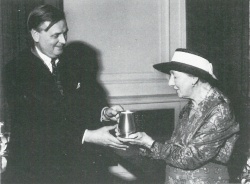
Dorothy Lilian Pile
1903-1993
Dorothy Pile was the first woman member of the Institution of Metallurgists, elected in 1946, and the first woman to be awarded Honorary Fellowship in 1983.
Pile began her career as an assistant in the chemical laboratory of the Midland Laboratory Guild Ltd in Birmingham in 1920, where she gained experience in metallography and physical testing before assisting RG Johnston in his research on sheet metal problems. She was an active member of the Birmingham Metallurgical Association and became its president in 1949.
Moving to London in 1945, Pile acted as secretary with the Sheet Metal Industries Association before joining the new Design and Research Centre for Gold, Silver and Jewellery Industries at Goldsmiths Hall. She became Information Officer for the British Jewellers Association and the Metals Finishing Association, and was active in the formation of the Cutlery Research Association at Sheffield. She was enthusiastic about decorative uses of metals and the associated production processes, sharing her knowledge through ‘literally hundreds of talks and presentations’ to manufacturers, local societies, schools and students. In 1981 she was admitted a Freeman of the Worshipful Company of Goldsmiths. On receiving her Honorary Fellowship from the Institution of Metallurgists in 1983, she presented the Institution with a special tankard to be used by the President – this is now one of the artefacts in the IOM3 Historical Collection.
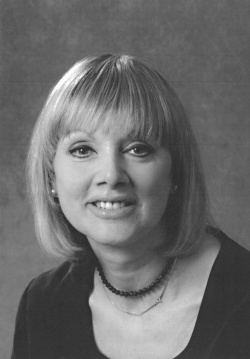
Jane Ann Plant
1945-2016
Professor Jane Plant was the first female President of the Institution of Mining and Metallurgy (IMM) in 2000-2002, immediately before its merger with the Institute of Materials to form IOM3.
Plant graduated in geology from Liverpool University, UK, and subsequently worked for the British Geological Survey (BGS) developing methods for geochemical mapping of the UK. As she progressed through BGS, she was awarded a PhD in geochemistry and later took a sabbatical to work for Middleton Exploration in North America on mineral exploration programmes. She was promoted to Chief Scientist of the BGS in 2000. Among her other appointments, she was a member of the Royal Commission on Environmental Pollution, Chair of the Government’s Advisory Committee on Hazardous Substances, a visiting professor at Liverpool University and Joint Leader of the US Global Geochemical Baselines programme. Plant was a Fellow of the Institution of Mining and Metallurgy and of the Royal Society of Arts, and a Freeman of the City of London. She was awarded a CBE in 1997 for services to geosciences and the minerals industry. In 2000 she published a book titled Your Life in Your Hands about her successful battle with breast cancer, which became a best seller.
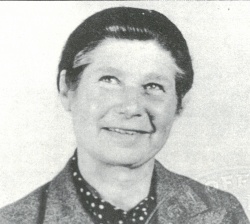
Constance Tipper (nee Elam)
1894-1995
Constance Tipper is best remembered for devising the Tipper test as a means of ascertaining the brittleness of steel under cold temperatures. She distinguished herself early on by becoming one of the first women to take the natural sciences tripos at the University of Cambridge, UK. She went on to work as an assistant in the metallurgical department at the NPL and then worked at the Royal School of Mines where she was Research Assistant to Sir Harold Carpenter, studying crystal growth and recrystallisation in metals. She then worked in the Cavendish Laboratory at Cambridge with G I Taylor on crystal plasticity, and was elected Armourers and Brasiers Research Fellow in Metallurgy in 1924. She was awarded the DSc of London University in 1926. Her book The Distortion of Metal Crystals (1935) was a pioneering treatment of an important aspect of metal behaviour.
From 1928, Constance conducted research in the Engineering Department at Cambridge, though she had no official post within the university. During WWII she lectured in the department and oversaw important heat treatment contracts for the war effort. Her most outstanding contributions from 1943 onwards were in relation to the deformation and fracture of iron and steel, investigating the failures occurring in all-welded ships, the so-called Liberty cargo ships. In the course of this work she developed an edge-notched tensile test (the Tipper test) as a research tool and test for material quality. Her book The Brittle Fracture Story (1962) provides a detailed picture of the way the subject developed over the years.
Tipper’s work remains one of the major contributions to metallurgical science but her achievements were not always formally or fully recognised. Her colleague, Professor J F Baker, is quoted as saying, ‘Her vigour in prosecuting her work in an extremely male preserve will always be remembered and admired by those who came into contact with her’.
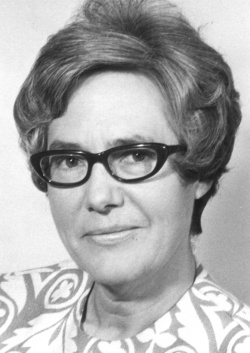
Marion Katharine McQuillan
1922-1998
Marion McQuillan was a well known authority on titanium alloys and Vice President of The Institute of Metals in 1973. Together with her husband, she authored the definitive textbook Titanium, usually referred to as McQuillan & McQuillan, published in 1956.
McQuillan graduated from Cambridge University, UK, with a degree in Natural Sciences (Metallurgy), and in 1942 took a research post at RAE Farnborough where she started work on titanium. At that time it was a rarity which few metallurgists had handled, but when she retired it had become a modern tonnage metal used everywhere from artificial hip joints to oil platforms. In 1947 she joined the Aeronautical Research Laboratory in Melbourne, Australia, where she met and married Alan, and together they returned to England where Marion joined the newly formed titanium section of ICI Metals Division (later IMI). McQuillan rose through the organisation to become Technical Director of the New Metals Division of IMI in1967 and then the leading authority on titanium alloys in Europe. She was the founder member of a team set up to develop materials for gas turbine engines and the driving force behind the First International Conference on Titanium, organised by The Institute of Metals in 1968 in London. She was a member of the Membership Affairs Committee of the Metals Society in 1977. Her achievements were recognised by the award of the Rosenhain Medal in 1965 for her outstanding contribution to physical metallurgy.
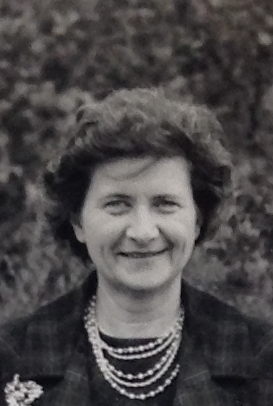
Jean Marion Taylor
1924-1999
Jean Taylor served as President of the Institute of Wood Science (IWSc) from 1986-1988 and was probably the first woman member of IWSc. Taylor served in the WRAF during WWII working on airframe maintenance and graduated from Cardiff University, UK, with a degree in Zoology. She joined the Forest Products Research Laboratory (FPRL) under R C Fisher in 1949 and was part of the post-war intake who spent much of their careers at FPRL and made major contributions to wood science. Taylor’s work was concerned with the development of laboratory testing technology and prediction of real-life performance. 20 years later she became Technical Director at Protim, where she stayed until retirement.
IWSc played a large part in Taylor’s life – she was elected a Fellow in 1962 and served on various committees before becoming President at a time of considerable change for the Institute. Her clear analytical approach and gift for enthusing people was put to good use during this time.
Portraits of these and other significant women in the history of the Institute are featured on the historical staircase at the IOM3 London headquarters.
Research by IOM3 Senior Information Officer, Hilda Kaune, compiled by IOM3 Director of Communications, Nuna Staniaszek, on behalf of the IOM3 Women in Materials Group.




